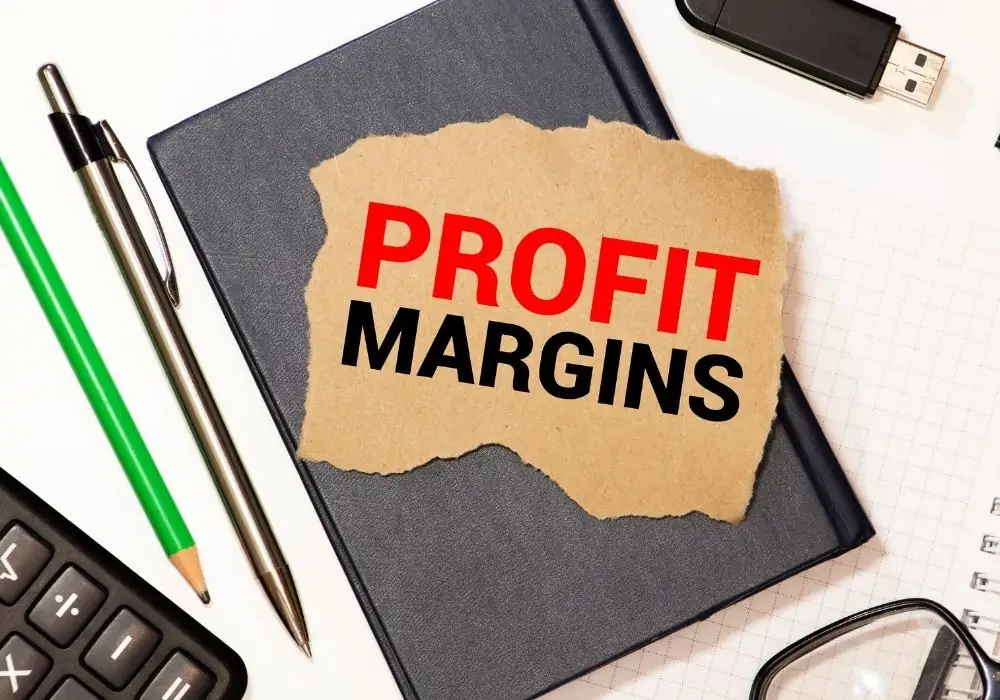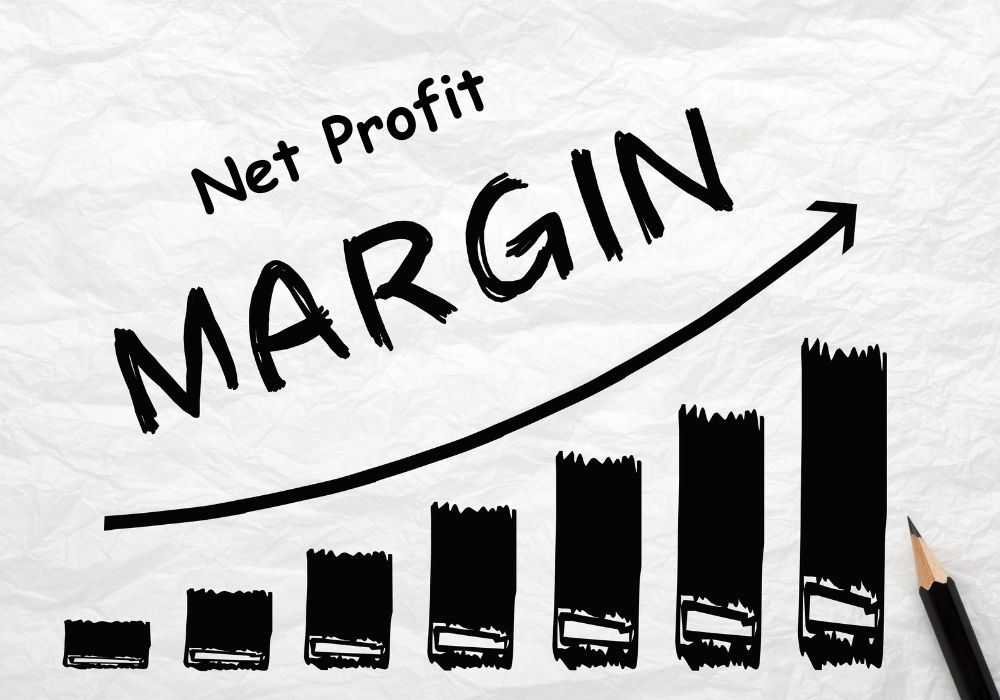- What’s Profit Margin?
- Profit Margin Use?
- The Formulas:
- Gross Profit Margin
- Operating Profit Margin
- Net Profit Margin
- Examples
- Step 1: Gather the Numbers
- Step 2: Gross Profit Margin
- Step 3: Operating Profit Margin
- Step 4: Net Profit Margin
- What Do These Numbers Tell Us?
- How to Boost Profit Margin?
- Things To Avoid
- Why This Matters for Everyone
- Wrapping It Up
Profit margin might sound like something straight out of a business textbook, but don’t let that scare you off. It’s really just a way to figure out how much money a business keeps after paying its bills.
Think of it like checking how much cash you have left from your paycheck after covering rent and groceries.
Whether you’re running a small side hustle, dreaming of starting a company, or just curious about how businesses tick, understanding profit margin is a game-changer.
This article breaks it down in a friendly, no-jargon way, with easy formulas and a real-life example to show how it all works.
By the end, you’ll be calculating profit margins like a pro and maybe even impressing your friends with your newfound business smarts.
What’s Profit Margin?
At its heart, profit margin is a percentage that shows how much of a business’s sales turn into actual profit after covering costs.
It’s like figuring out how much of every dollar you earn stays in your pocket. Businesses use it to see how efficiently they’re turning revenue into profit. It’s not just about making money—it’s about keeping it!
There are three main types of profit margin to know: gross profit margin, operating profit margin, and net profit margin. Each one zooms in on a different slice of the business.
Gross profit margin looks at what’s left after paying for the stuff needed to make a product, like ingredients or materials.
Operating profit margin adds in the costs of running the business, like rent or utilities. Net profit margin goes all-in, factoring in every expense—taxes, loans, you name it.
This guide covers all three, with a focus on net profit margin since it’s the one folks usually mean when they talk about “profit margin.”
Profit Margin Use?
Profit margin isn’t just a fancy number for accountants to geek out over. It’s a tool that answers big questions: Is the business making enough to grow? How does it compare to similar companies?
– Are expenses eating up too much of the sales? A high profit margin means a business is retaining a significant portion of its revenue, which could indicate it’s running smoothly or has strong pricing power. A low margin might mean costs are out of hand or the market’s super competitive.
For someone running a small business, profit margin helps decide things like whether to bump up prices or cut back on spending.
If you’re investing, it’s a way to spot financially solid companies. Even if you’re just an employee, knowing your company’s profit margin can give you a hint about job stability or whether there’s room for a raise. It’s like a financial health check anyone can use.
The Formulas:
Ready to crunch some numbers? Don’t worry—the math is easier than it sounds. Each profit margin has its own formula, but they all boil down to taking the profit, dividing it by revenue, and turning it into a percentage. Here’s the lowdown.
Gross Profit Margin
This one’s the simplest. It shows what’s left after paying for the direct costs of making a product or service (called Cost of Goods Sold, or COGS). Think ingredients for a bakery or materials for a craft business.
Formula:
Gross Profit Margin = ((Revenue – COGS) / Revenue) × 100
Operating Profit Margin
This steps it up by adding in operating expenses—things like rent, utilities, or marketing. It shows how well the business handles its everyday costs.
Formula:
Operating Profit Margin = ((Revenue – COGS – Operating Expenses) / Revenue) × 100
Net Profit Margin
This is the full picture, including all costs—COGS, operating expenses, taxes, interest, everything. It’s the ultimate measure of profitability.
Formula:
Net Profit Margin = ((Revenue – COGS – Operating Expenses – Taxes – Interest) / Revenue) × 100
These formulas are straightforward but powerful. They turn raw numbers into percentages, making it easy to compare businesses, no matter their size.
Examples
To see how this works in real life, picture a cozy little coffee shop called Brewed Awakening. Last month, it made $20,000 selling lattes, muffins, and cute tote bags.
Let’s walk through how to calculate its profit margins, step by step, like you’re chatting with a friend over coffee.
Step 1: Gather the Numbers
To figure out profit margins, you need the key financials. For Brewed Awakening, here’s what’s on the table:
- Revenue: $20,000 (all the money from coffee, muffins, and merch)
- Cost of Goods Sold (COGS): $8,000 (coffee beans, milk, flour, packaging)
- Operating Expenses: $7,000 (rent, utilities, barista wages, ads)
- Taxes: $1,500
- Interest: $500 (on a small loan for the espresso machine)
Step 2: Gross Profit Margin
Start with gross profit margin, which looks at revenue minus COGS.
- Gross Profit = Revenue – COGS = $20,000 – $8,000 = $12,000
- Gross Profit Margin = ($12,000 / $20,000) × 100 = 60%
So, 60% of the shop’s revenue stays after paying for coffee beans and muffin ingredients. That’s a pretty sweet deal—it shows the core business is doing well.
Step 3: Operating Profit Margin
Now, add in operating expenses to see how the day-to-day costs affect things.
- Operating Profit = Revenue – COGS – Operating Expenses = $20,000 – $8,000 – $7,000 = $5,000
- Operating Profit Margin = ($5,000 / $20,000) × 100 = 25%
A 25% operating margin means the shop keeps 25 cents of every dollar after covering rent and barista wages. Not too shabby, but you can see how those extra costs take a bite.
Step 4: Net Profit Margin
Finally, throw in taxes and interest for the full scoop.
- Net Profit = Revenue – COGS – Operating Expenses – Taxes – Interest = $20,000 – $8,000 – $7,000 – $1,500 – $500 = $3,000
- Net Profit Margin = ($3,000 / $20,000) × 100 = 15%
A 15% net profit margin means Brewed Awakening keeps 15 cents of every dollar after everything. That’s the number that shows how the business is really doing.
What Do These Numbers Tell Us?
Brewed Awakening’s got a 60% gross profit margin, a 25% operating margin, and a 15% net profit margin. What’s the story here? The high gross margin says the shop’s pricing its coffee and muffins well compared to what it costs to make them.
The drop to 25% for operating margin shows that running the place—paying rent, staff, and utilities—eats up a big chunk of profit.
By the time taxes and interest are paid, the 15% net margin is solid for a coffee shop, where margins often hover between 10-20%.
If that net margin were lower, like 5%, it might mean the shop’s struggling with high costs or low prices. If it were higher, say 30%, it could be a sign they’re ready to expand or invest in a new espresso machine. Comparing these numbers to other coffee shops or industry averages gives even more insight.
How to Boost Profit Margin?
Want to make those margins sparkle? Here are some down-to-earth ideas:
- Trim Costs: Check COGS first. Could a cheaper supplier provide the same quality coffee beans? Maybe save a few dollars without changing the vibe.
- Raise Prices (a Little): If customers love the coffee, a small price hike—like 50 cents on a latte—might not scare them off but could lift profits.
- Run Lean: Cut operating costs by tweaking staff schedules or negotiating lower rent. Every dollar saved boosts the margin.
- Sell More: Push add-ons, like a muffin with that latte, to increase revenue without much extra cost.
- Check Often: Calculate margins every month to catch problems early. Shrinking margins? Time to investigate.
Things To Avoid
Calculating profit margin is pretty easy, but it’s not hard to mess up. Here are some common mistakes to dodge:
- Mixing Up Costs: COGS is just for direct costs, like ingredients—not rent or utilities. Keep them separate.
- Forgetting Small Stuff: For net profit margin, every expense counts—don’t skip taxes or that random loan interest.
- Not Comparing: A margin alone doesn’t tell the whole story. Check it against competitors or past months for context.
- Only Looking at Net: Gross and operating margins can highlight specific issues, like pricey ingredients or high rent.
Why This Matters for Everyone
Profit margin isn’t just for business owners. Freelancers can use it to see which gigs are worth their time. Investors can check it to pick companies that are financially strong.
Even at home, thinking about “profit margin” can help with budgeting—how much of your income is left after bills?
For a place like Brewed Awakening, profit margin is like a report card. It shows where the money’s going and whether the business can keep brewing those lattes.
By mastering these calculations, anyone can get a handle on financial health and make smarter choices.
Wrapping It Up
Calculating profit margin doesn’t need to be a headache. With simple formulas—(Revenue – Costs) / Revenue × 100—and a real example like Brewed Awakening, it’s clear how to make sense of the numbers.
Whether it’s gross, operating, or net profit margin, each one tells you something about how a business is doing.
Keep costs in check, compare margins to the competition, and use the insights to make better decisions. Profit margin is like a friendly guide, helping businesses—and even regular folks—navigate toward success.







